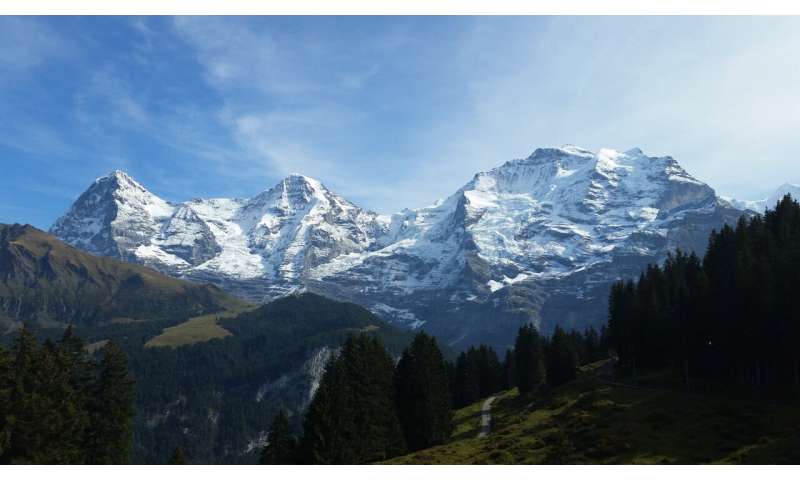The Swiss Alps continue to rise: Evidence from cosmic rays show lift outpaces erosion
NOVEMBER 27, 2020
by University of Bern

An international team, headed by members of the University of Bern, has shown for the first time that the Swiss Alps continue to rise. In the picture: Eiger Mönch and Jungfrau. Credit: Pixabay
An international team of geologists, headed by members of the University of Bern, has shown for the first time that the Swiss Alps are being lifted faster than they are being lowered through erosion—and are thus growing even higher. To do this, the researchers quantified the erosion of the Alps with the help of isotopes measured in the sand of more than 350 rivers throughout the European Alps. These isotopes are formed by cosmic rays and bear information on the Earth's surface erosion.
How quickly are the Alps eroded? Has erosion been faster than crustal uplift, and is erosion dependent on precipitation? An international team of geologists, headed by members of the University of Bern, was able to solve these questions. The researchers were able to illustrate that the erosion occurs more slowly than the uplift, especially in the Swiss Alps. They were also able to show that the erosion mainly depends on the relief and the slope of the terrain, while precipitation and water runoff have no clearly recognizable influence. The study was published in the journal Earth-Science Reviews.
Measurement of surface erosion in the Alps with cosmic rays
As cosmic rays hit Earth's surface, oxygen atoms that constitute quartz minerals experience a nuclear reaction. As a result, a new isotope, namely beryllium-10 (10Be) is formed. Because 10Be is only formed on Earth's uppermost surface, the surface age can be determined with this isotope. If the 10Be concentration in the quartz grains is high, then the surface has been exposed to cosmic rays for a relatively long time and is therefore relatively old. If, on the other hand, the 10Be concentration in the quartz is low, then the exposure time was short and the surface is younger.
"This principle can also be used to quantify the rate of erosion in the Alps, averaged over a few thousand years," explains Professor Fritz Schlunegger, who initiated the study together with his colleague, Dr. Romain Delunel from the Institute of Geological Sciences at the University of Bern. Mountain streams and rivers collect material removed from the surface and transport it as sand and pebbles into the plains. The European team headed by the Bern researchers analyzed the 10Be concentrations within the quartz grains from more than 350 rivers from all over the Alpine regions. "With this strategy we can for the first time draw a picture of the erosion across the entire European Alps and explore its driving mechanisms," says Romain Delunel.
More:
https://phys.org/news/2020-11-swiss-alps-evidence-cosmic-rays.html
